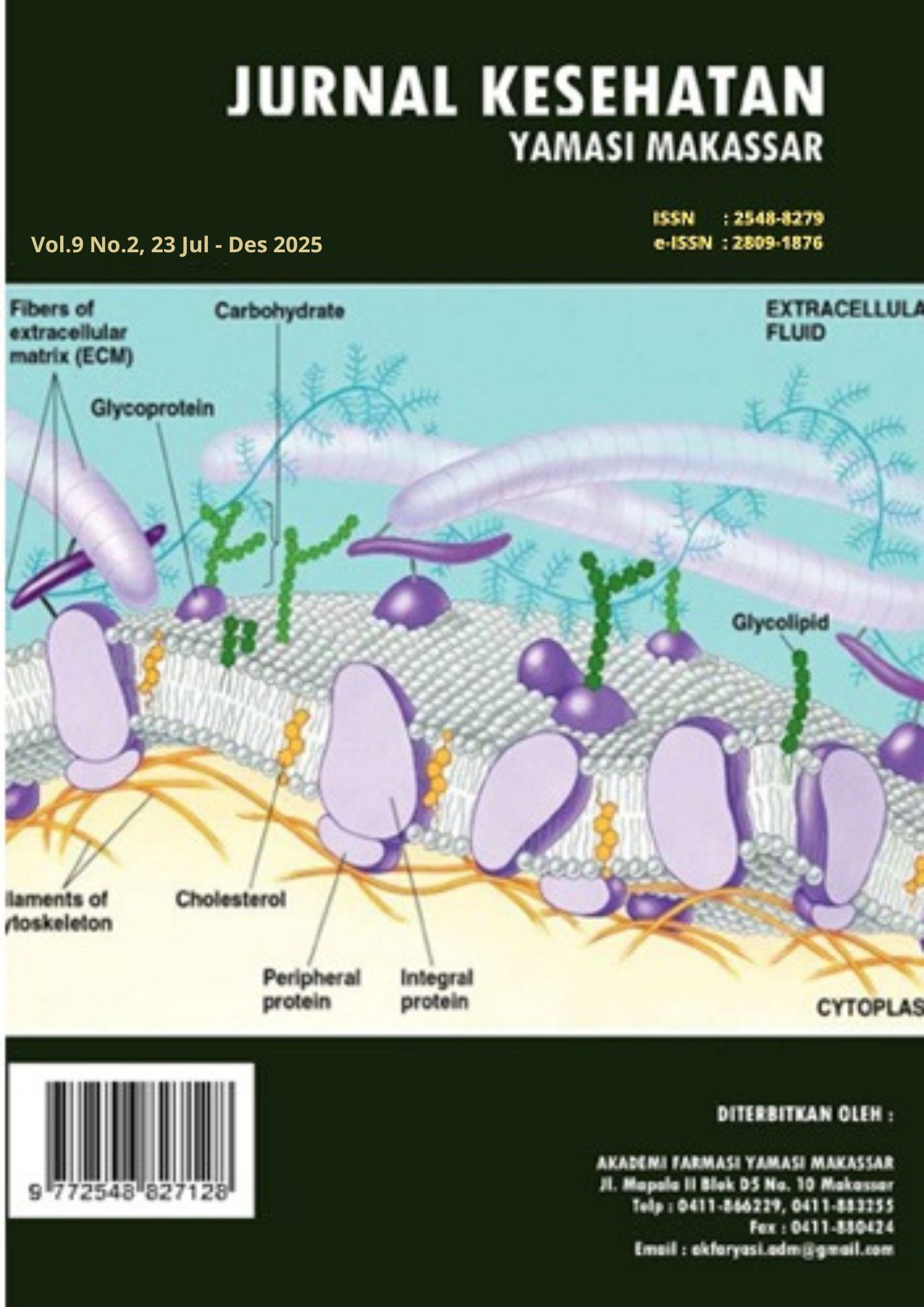DISTRIBUSI PENGGUNAAN BERAGAM JENIS VAKSIN COVID-19 DI WILAYAH KERJA PUSKESMAS GENTUNGAN, DESA GENTUNGAN, KECAMATAN BAJENG BARAT, KABUPATEN GOWA TAHUN 2022
DOI:
https://doi.org/10.59060/jurkes.v9i2.396Abstract
In December 2019, Wuhan City in Hubei Province, China, became the epicenter of a novel coronavirus outbreak, later identified as SARS-CoV-2, the causative agent of COVID-19. Common symptoms of COVID-19 infection include fever, cough, and shortness of breath. This study aimed to determine the percentage distribution of various COVID-19 vaccine types administered at the Gentungan Public Health Center. Employing a non-experimental, descriptive approach, this research analyzed existing data without intervention on test subjects, utilizing a retrospective data collection method. The study population comprised 9,000 individuals, from which a sample of 383 participants was selected. The results indicated the following distribution of vaccine usage: Sinovac was administered to 236 individuals (61.61%), Pfizer to 61 individuals (15.92%), Moderna to 53 individuals (13.83%), and AstraZeneca to 33 individuals (8.61%). Sinovac was the most frequently administered vaccine, likely due to its ample availability and the lack of choice afforded to the public regarding vaccine selection.
References
Hermansyah, A., Wulandari, L. P. L., Kristina, S. A., & Meilianti, S. (2020). Primary health care policy and vision for community pharmacy and pharmacists in Indonesia. Pharmacy Practice (Granada), 18(3).
Lutpi, S. A., Rohimat, M. F., Alpin, A., & Laksana, M. W. (2022). Netizen’s Reception of Covid-19 Vaccination Policy Communication Through Instagram Account@ kemenkes_ri. Publica: Jurnal Pemikiran Administrasi Negara, 14(1), 65–77.
Maler, F., Wienaldi, W., & Adrian, A. (2022). DESCRIPTION OF DIAGNOSTIC COVID-19 ADULT PATIENTS AT ROYAL PRIMA HOSPITAL. Jambura Journal of Health Sciences and Research, 4, 475–483. https://doi.org/10.35971/jjhsr.v4i1.12216
Pohan, D. J., Gultom, F. L., & Halim, B. P. (2022). Description of Covid-19 Patients with Comorbidity. Journal of Drug Delivery and Therapeutics, 12(4), 116–124.
Prabowo, N., Hartono, & Suwandono, A. (2022). COVID-19 VACCINE STRATEGIES IN INDONESIA AND THEIR RELATIONSHIP WITH NATIONAL RESILIENCE. International Journal of Research -GRANTHAALAYAH, 10. https://doi.org/10.29121/granthaalayah.v10.i10.2022.4845
Puteri, A. E., Yuliarti, E., Maharani, N. P., Fauzia, A. A., Wicaksono, Y. S., & Tresiana, N. (2022). Analisis implementasi kebijakan vaksinasi COVID-19 di Indonesia. Jurnal Ilmu Administrasi: Media Pengembangan Ilmu Dan Praktek Administrasi, 19(1), 122–130.
Risky, S., Jayadipraja, E. A., Hadju, L., & Lisnawati, L. (2022). Pendidikan Kesehatan Menggunakan Metode Buzz Group Discussion di TK. Jurnal Obsesi: Jurnal Pendidikan Anak Usia Dini, 6(6), 5782–5789.
Rokim, A., Putra, D. H., Rumana, N. A., & Indawati, L. (2024). Evaluasi Sistem Informasi Manajemen Puskesmas (Simpus) Dengan Metode Hot-Fit Di Puskesmas Kecamatan Cakung. Jurnal Manajemen Informasi Kesehatan Indonesia, 12(1).
Suratri, M. A. L., Jovina, T. A., & Sulistyowati, E. (2019). Pengetahuan Masyarakat dan Pelaksanaan Wawancara Program Indonesia Sehat dengan Pendekatan Keluarga (PIS-PK) di Beberapa Puskesmas di Indonesia. Jurnal Penelitian Dan Pengembangan Pelayanan Kesehatan, 3(1), 1–8.
Widjaja, V., & Widodo, N. M. (2021). Pengaruh Teknologi Internet Terhadap Pengetahuan Masyarakat Jakarta Seputar Informasi Vaksinasi Covid-19. Tematik, 8(1), 1–13.













